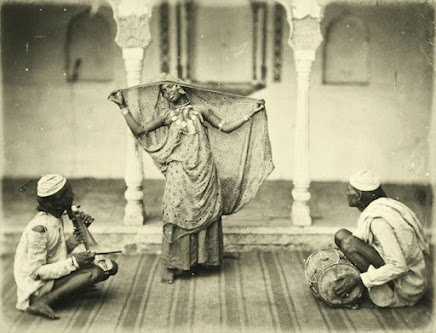Can Photographs Change the World?
 | ||||||
| "Falling Man" by Richard Drew |
"Falling Man" is actually a photograph I'd seen before many years ago, and it's stuck with me ever since at the back of my mind. It is incredibly striking imagery with the backdrop of the horrifying implication that this man preferred to die jumping off the World Trade Center as opposed to burning to death in it.
This photograph has honestly haunted me for the many years between when I first saw it up to now where I encountered it again. There's no gore, not even a spot of blood or anything else like that that might warrant censorship or a content warning, aside from the incredibly obvious action the man is taking. At the same time, I couldn't look away because a man willingly falling to his death just isn't a type of photograph you run across often. Both because the occurrence isn't common and social propriety would discourage taking a photo of a scene such as this. But this photograph is always my go-to image when I want to evoke the sheer horror of a situation. The photograph caught the man while he was still alive, but he was still falling. There is a sense of helplessness and inevitability in viewing this photograph, because of that.
However, I do find it interesting that this photograph was allowed to be published, as per the article in Module 3 Section 1 "100 Influential Images of All Time", "On a day of mass tragedy, Falling Man is one of the only widely seen
pictures that shows someone dying. The photo was published in newspapers
around the U.S. in the days after the attacks, but backlash from
readers forced it into temporary obscurity". This is in direct juxtaposition to Ted Rall's article "Censorship of War Casualties in the US" in Module 3 Section 2, which says that "Atrocities committed – and often photographed – by US military forces
have also been thoroughly sanitised from the public narrative". At first glance, these two quotes might not look connected, but in the context of "Falling Man" being from 9/11 which would kick off the War on Terror, as well as it only being censored after reader backlash compared to military atrocities which are government censored right out of the gate, it is difficult to not read it as influencing the public for an agenda.
Can Photographs Change the World?
When pondering whether photographs can change the world, I am reminded of Brandon Sanderson's Mistborn series which I had the pleasure of reading over the summer. While there are no actual cameras or direct discussions of photography within Mistborn, there is a specific scene in the first book whose message I think is applicable.
The scene is of the main cast staging covert recruitment campaigns to convince the oppressed population to take up arms against their tyrannical ruler. During the scene, one of the characters who has the ability to depress and amplify emotions uses their abilities to influence the emotions of the audience in the room they are trying to appeal to. When the main character asks why they bother when the audience's emotions will cease being influenced when they leave, the character replies that while their influence on the audience's emotions will be gone, the memory of their emotions during the recruitment campaign will remain.
The essence of the scene is that people are more profoundly affected when they remember that they felt strongly during or towards something, and that influences their actions going forward
In his TedTalk, Jonathan Klein of Getty Images echos this sentiment when he says, "...since the beginning of photography, images have provoked reactions in people, and those reactions have caused change to happen". He does start with the caveat that we know that the images themselves don't directly change the world, but it is a moot point. Photographs aren't taken with the intention of them by themselves changing the world; there is some awareness that they have to go through a human filter first. They are taken with the intention of provoking reactions in people as Jonathan Klein said, so when the person looks back on the memory, they continue to be profoundly affected by the photograph and that will trickle down to influence their actions going forward.
 |
| Photo by Jacob Riis |
This photograph is part of a collection by Jacob Riis called "How the Other Half Lives", taken with the intention to expose urban poverty to the middle and upper classes.
it is fairly obvious as per Jonathan Klein's words that this photograph on its strict lonesome cannot enact change to urban poverty. However, like with the scene in Mistborn, it is intended to elicit emotions like sadness and sympathy that people will now remember when they are reminded of urban poverty in their daily lives.
On that front, while it obviously didn't eradicate all poverty (which would be a tall order for any photograph), it does have a documented impact. Riis's work led to legislation to improve living conditions for the poor in New York.
While Riis hardly had the convenience of modern smartphones to aid in his work, it is easy to see almost a spiritual successor to his work in the increase in citizen journalism. As per the article in Module 3 Section 2, "Ferguson's citizen journalists revealed the value of undeniable video", "Video and pictures are an equalizer... they can be essential tools to
help restore some balance in a system..." which goes to show that pictures still remain powerful tools of social justice.


Comments
Post a Comment